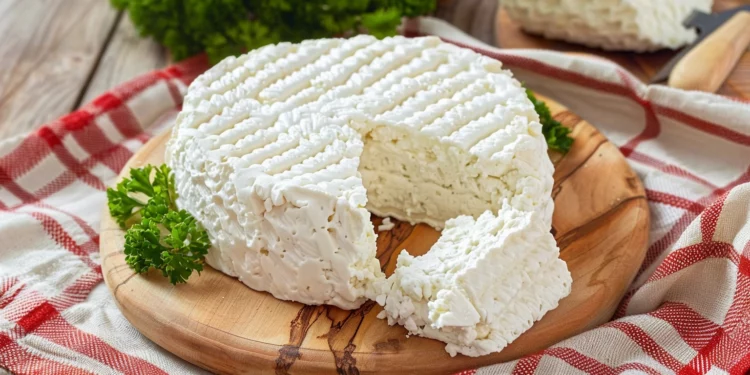In the heart of Polish cuisine lies twaróg, a creamy, fresh cheese that is as versatile as it is delicious. Known for its distinctive texture and slightly tangy flavor, twaróg is a cornerstone of many traditional Polish dishes, from the beloved cheesecake, Sernik, to the savory filled dumplings, Pierogi. But twaróg is more than just an ingredient; it’s a symbol of Polish culinary traditions, a testament to the country’s rich agricultural history, and a beloved staple in households across Poland. Join us as we explore the origins of twaróg, learn how to make it at home, and uncover the secrets to incorporating it into a variety of dishes.
Twaróg’s roots in Polish cuisine can be traced back centuries, evolving from a simple farmer’s cheese to a culinary icon. Its origins are deeply tied to the pastoral traditions of Eastern Europe, where dairy products have long played a crucial role in the diet. Twaróg was originally made by peasants from cow’s milk, a practical way to preserve milk and provide a source of protein and calcium through the long, harsh winters. Over time, twaróg gained popularity across all strata of Polish society, becoming a beloved ingredient in both sweet and savory dishes.
Ingredients:
- 2 liters (about 8 cups) of whole milk: The fat content in whole milk contributes to the cheese’s flavor and texture.
- 1 cup of buttermilk: The cultures in buttermilk will help sour and curdle the milk.
- Juice of 1 large lemon: Lemon juice is an acid that aids in the curdling process.
- A pinch of salt (optional): Enhances the flavor of the cheese.
Equipment:
- Large pot: For heating the milk.
- Thermometer (optional): To monitor the milk’s temperature.
- Cheesecloth or a clean, thin kitchen towel: For straining the curds from the whey.
- Colander: To hold the cheesecloth and catch the curds.
- String or rubber band: To tie up the cheesecloth.
Instructions:
Preparing the Milk:
- Mix Milk and Buttermilk: In a large pot, combine the whole milk and buttermilk. If you’re using a thermometer, clip it to the side of the pot.
Curdling the Milk:
- Heat the Mixture: Slowly heat the milk mixture on low to medium heat. Stir occasionally to prevent the milk from scorching at the bottom. Heat until it reaches about 175°F (80°C), just before it comes to a boil. If you don’t have a thermometer, watch for the milk to start steaming and forming small bubbles around the edge.
- Add Lemon Juice: Once the milk is heated, add the lemon juice and stir gently. You’ll notice the milk beginning to curdle as the acid reacts with it. Let the mixture sit for 1-2 minutes to allow the curds to fully form.
Draining the Curds:
- Prepare to Strain: While the milk is curdling, line a colander with cheesecloth (or a clean kitchen towel) and place it over a large bowl or sink to catch the whey.
- Strain the Curds: Carefully pour the curdled milk into the lined colander. You’ll see the curds (the solid parts) separating from the whey (the liquid).
Forming the Cheese:
- Drain Excess Whey: Gather the corners of the cheesecloth and tie them with a string or rubber band. Gently squeeze to remove excess whey. Be careful not to press too hard, as the curds are still quite delicate.
- Hang to Drain: Hang the tied cheesecloth over a bowl or sink to allow any remaining whey to drip out. This should take about 1-2 hours. For a firmer cheese, you can leave it to drain longer.
- Season (Optional): Once the cheese has drained, you can mix in a pinch of salt for flavor if desired.
Storing the Twaróg:
- Store: Transfer the twaróg to an airtight container. It can be stored in the refrigerator for up to a week.
Tips for Perfect Homemade Twaróg:
- Fresh Ingredients: Use the freshest milk and buttermilk you can find for the best flavor.
- Gentle Heat: Avoid high heat, as it can cause the milk to burn and result in a grainy texture.
- Patience is Key: Don’t rush the curdling and draining process. Giving the curds time to form and the whey time to drain ensures a smoother, creamier cheese.
- Culinary Versatility: Twaróg can be used in a wide range of dishes. Its creamy texture makes it perfect for cheesecakes and desserts, while its tanginess adds depth to savory dishes like Pierogi or Naleśniki (Polish crepes).
- Flavor Pairings: The subtle tanginess of twaróg pairs well with sweet fruits like strawberries and raspberries, making it an excellent filling or topping. It also complements savory flavors such as sautéed mushrooms, fresh herbs, and caramelized onions.
- Storage: Fresh twaróg can be stored in an airtight container in the refrigerator for up to a week.
Making twaróg at home is not only a nod to traditional Polish culinary practices but also a step toward more wholesome, handmade food. Enjoy the process and the delicious outcomes of your homemade cheese!

















